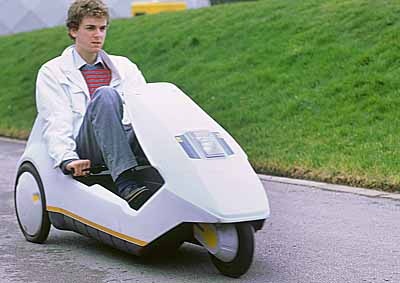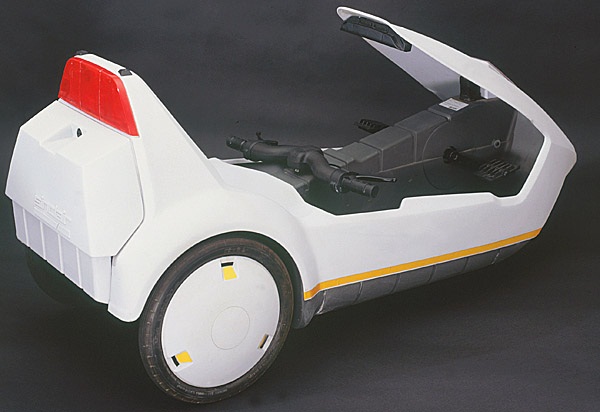
LONDON, England - The 30th anniversary of the Sinclair C5, one of the most unusual vehicles yet assembled built in Britain, is being celebrated by that country’s National Motor Museum.
The streamlined pedal/electric tricycle was put on display in the museum when it was launched on January 10 1985. Now one of them is back, a gift from the people who made it.
The trike, despite Lotus designing
the steel backbone under its plastic body, failed to stir public imagination three
decades earlier but today, the museum says, is regarded as an icon of 1980’s
design, a pioneer of alternative propulsion – “and an endearing British failure”.
NIMBLE ALTERNATIVE
Handlebars, bizarrely located beneath the driver’s (rider’s?) bent knees, carried controls for steering, brakes and acceleration.
The Sinclair C5 came from inventor and entrepreneur Sir Clive Sinclair. His intention: an inexpensive and nimble alternative for one person who would otherwise use a car, bus or bicycle.
The museum explained: “It was marketed as ‘a new power in personal transport’, retailed for the then equivalent of R800, and claimed to be able to travel eight kilometres for a penny’s worth of electricity (then about 2c).”
Sinclair, however, hadn’t thought the whole thing through in real-life terms. The C5 was only 80cm high, so not really visible in the city traffic for which it was intended, and had a range of only about 45km.
It was also open to the wet English weather, though a wet-weather poncho was an extra-cost option, and the C5 had a short production life. It also could not compete with a simple - two-seater - two-stroke scooter.
Sinclair the dreamer had expected to
sell as many as 100 000 a year; 10 months after launch only 9000 had been
assembled, the line stopped and the production company collapsed.
MINIATURE ELECTRONICS PIONEER
An electric motor powered the left rear wheel to take the C5 to its legal maximum legal of 25km/h; anybody older than 13 could use one on public roads, no driving licence required. Units were delivered to buyers in a cardboard box.
The museum added: “Sinclair had an impressive list of revolutionary designs to his name. As a pioneer of miniaturising electronic hardware, his creations included the ZX range of inexpensive home computers, the digital watch, the world’s first slim-line pocket calculator and the world’s first pocket TV.
“Had the C5 succeeded, Sinclair would have moved on to an already-planned four-seater battery car with a target top speed of 130km/h.”
The knighted genius was simply a couple of decades ahead of his time.
The C5 can be seen as part of a
visit to the whole Beaulieu attraction, which also includes Palace House,
Beaulieu Abbey and World of Top Gear. For more details, visit www.beaulieu.co.uk
HANDLEBARS UNDER YOUR KNEES? Even chassis input from Lotus Cars couldn't help the Sinclair C5 to succeed as commuter/local leisure transport.




 Publications
Publications
 Partners
Partners














